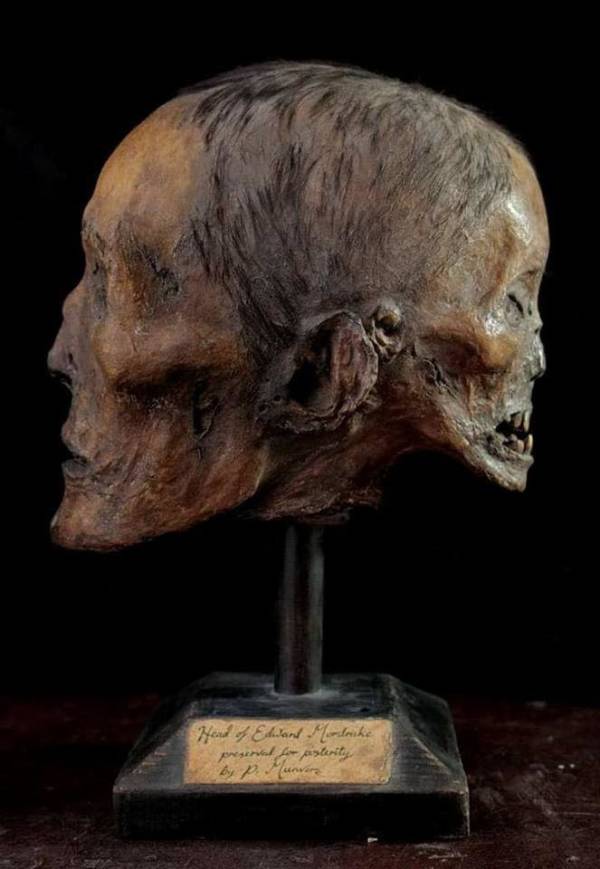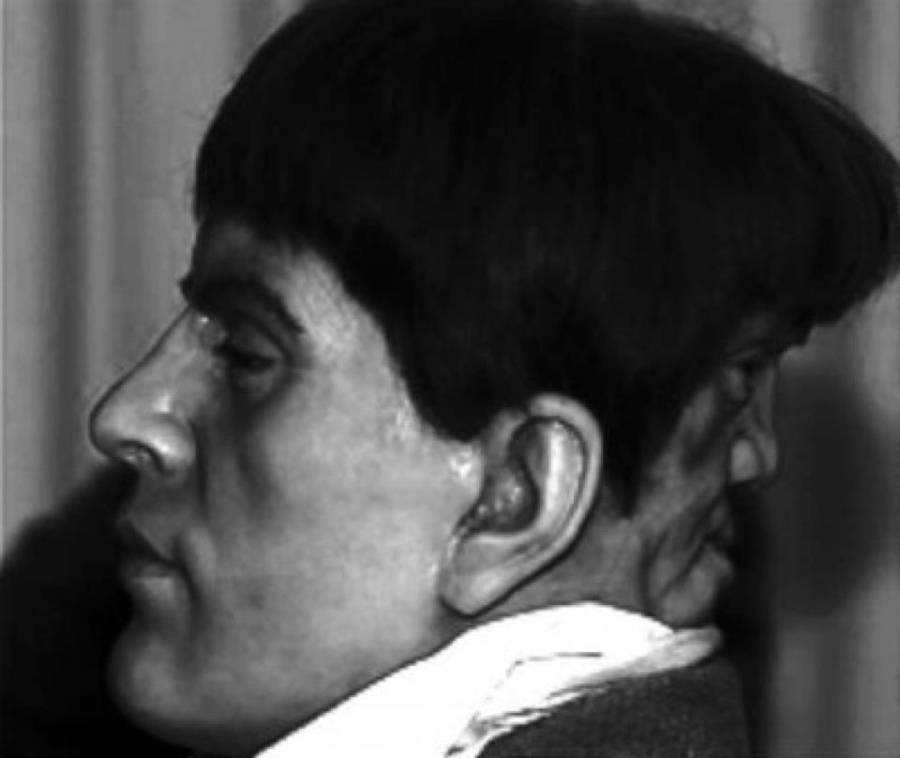
Also known as Edward Mordake, Edward Mordrake was a 19th-century Englishman born with an extra face on the back of his head — or so the legends claim.
On December 8, 1895, the Boston Sunday Post published an article titled “The Wonders of Modern Science.” This article presented reports from the so-called “Royal Scientific Society,” which documented the existence of “human freaks.” Supposedly cataloged by British scientists, this list of “human freaks” included a mermaid, a terrifying human crab, and the unfortunate Edward Mordrake — a man with two faces.

TwitterA wax depiction of the legendary Edward Mordrake, the man with two faces.
Though the Post and the 1896 encyclopedia Anomalies and Curiosities of Medicine both tell the tale of Edward Mordrake, the Englishman born with two faces, no other firm evidence exists. To this day, many think the story to be a hoax, but some believers nevertheless remain convinced.
This is the eerie tale of Edward Mordrake.
The Myth Of Edward Mordrake Begins
As the Post reported, Edward Mordrake (originally spelled Mordake) was a young, intelligent, and good-looking English nobleman, as well as a “musician of rare ability.” But with all of his great blessings came a terrible curse. In addition to his handsome, normal face, Mordrake had a terrifying second face on the back of his head.
The second face was said to be as “lovely as a dream, hideous as a devil.” This strange visage also possessed an intelligence “of a malignant sort.” Whenever Mordrake cried, the second face would “smile and sneer.”

The Boston Sunday PostAn illustration of Edward Mordrake and his “devil twin.”
Mordrake was constantly plagued by his “devil twin,” which kept him up all night whispering “such things as they only speak of in hell.” The young nobleman was eventually driven mad and took his own life at the age of 23, leaving behind a note ordering that the evil face should be destroyed after his death, “lest it continues its dreadful whispering in my grave.”
This story of the man with two faces spread like wildfire across America. The public clamored for more details about Mordrake, and even medical professionals approached the story without a hint of skepticism.
In 1896, American doctors George M. Gould and Walter L. Pyle included the Mordrake story in their book Anomalies and Curiosities of Medicine — a collection of peculiar medical cases. Although Gould and Pyle were legitimate ophthalmologists with successful medical practices, they were also quite gullible in at least this one case.
Because as it turned out, the story of Edward Mordrake was fake.
The Truth Behind The “Man With Two Faces”

Wikimedia CommonsThis photo that supposedly depicted Edward Mordrake’s mummified head quickly went viral in 2018.
As Alex Boese’s blog Museum of Hoaxes diligently deduced, the author of the original Post article, Charles Lotin Hildreth, was a poet and science-fiction writer. His stories tended toward the fantastical and other-worldly, as opposed to articles based in reality.
Of course, just because someone usually writes fiction doesn’t mean that every single thing they write is fictional. Still, there are many clues that suggest that the Mordrake story is completely made up.
For one, Hildreth’s article cites the “Royal Scientific Society” as its source for its numerous bizarre medical cases, but an organization by that name didn’t exist in the 19th century.
The Royal Society of London was a centuries-old scientific institution, but there was no organization that was both “Royal” and “Scientific” by name in the Western world. However, this name might’ve sounded believable to people who didn’t live in England — which may explain why so many Americans fell for the story of the man with two faces.
Secondly, Hildreth’s article appears to be the first time any of the medical cases he describes have ever appeared in any literature, scientific or otherwise. The Royal Society of London’s entire database is searchable online, and Boese wasn’t able to find any of Hildreth’s anomalies in its archives — from the Norfolk Spider (a human head with six hairy legs) to the Fish Woman of Lincoln (a mermaid-type creature).
“When we realize this,” Boese wrote, “that’s when it becomes apparent that Hildreth’s article was fiction. All of it sprang from his imagination, including Edward Mordake.”
As one might imagine, many newspapers in the late 19th century weren’t held to the same editorial standards as they are today. While they were still vital sources of information and entertainment, they were also filled with fictional tales that were presented as if they were nonfiction.
Ultimately, Hildreth’s story about a man with two faces wasn’t necessarily irresponsible journalism. It was simply a tale written convincingly enough to trick a couple of doctors — and to endure in the public imagination for more than a century. Hildreth died mere months after his article was published, so he never got to see just how quickly Americans were fooled by his wild creativity.
The Enduring Legacy Of Edward Mordrake
Edward Mordrake’s story experienced a recent resurgence in popularity, thanks in part to the TV series American Horror Story.
The show rehashes the basics of the urban legend, although the television incarnation of Mordrake is driven to murder as well as suicide. The writers must have taken a great deal of inspiration from the original Boston Sunday Post article, since the lobster boy also makes an appearance in the show.
Lest modern readers think they are so much wiser than their Victorian fore-bearers that they would never be taken in by such an absurd tale, a photo supposedly depicting the remains of Mordrake’s head went viral in 2018.
This is not the first time a photo of the cursed nobleman has seized the public’s attention. But like all of the others, it is far from authentic.
The gruesome Janus-like skull is, in fact, just a papier-mâché artist’s imagining of what Edward Mordrake might have looked like if he existed. The artist has even gone on record stating it was created entirely for entertainment purposes. Another famous photo that is often mistakenly labeled as authentic is the work of a different artist who used wax.
Of course, even the most fantastical stories do contain at least a small grain of truth. The medical condition known as “craniofacial duplication” — the result of an abnormal protein expression — can cause the facial features of an embryo to be duplicated.
The condition is extremely rare and usually lethal, although there are a few recent documented cases of infants who managed to survive a short time with this mutation.
For instance, Lali Singh was born with the condition in India in 2008.
Though Singh sadly didn’t live long, she was not believed to be cursed like Edward Mordrake. In fact, residents of her village thought that she was an incarnation of the Hindu goddess Durga, who is traditionally portrayed with multiple limbs.
After the poor baby Lali died when she was only a few months old, the villagers constructed a temple in her honor.
As for Edward Mordrake, his story continues to shock — and fool — people today. Even though the man himself never existed, the tale remains an enduring urban legend that will likely raise eyebrows for years to come.